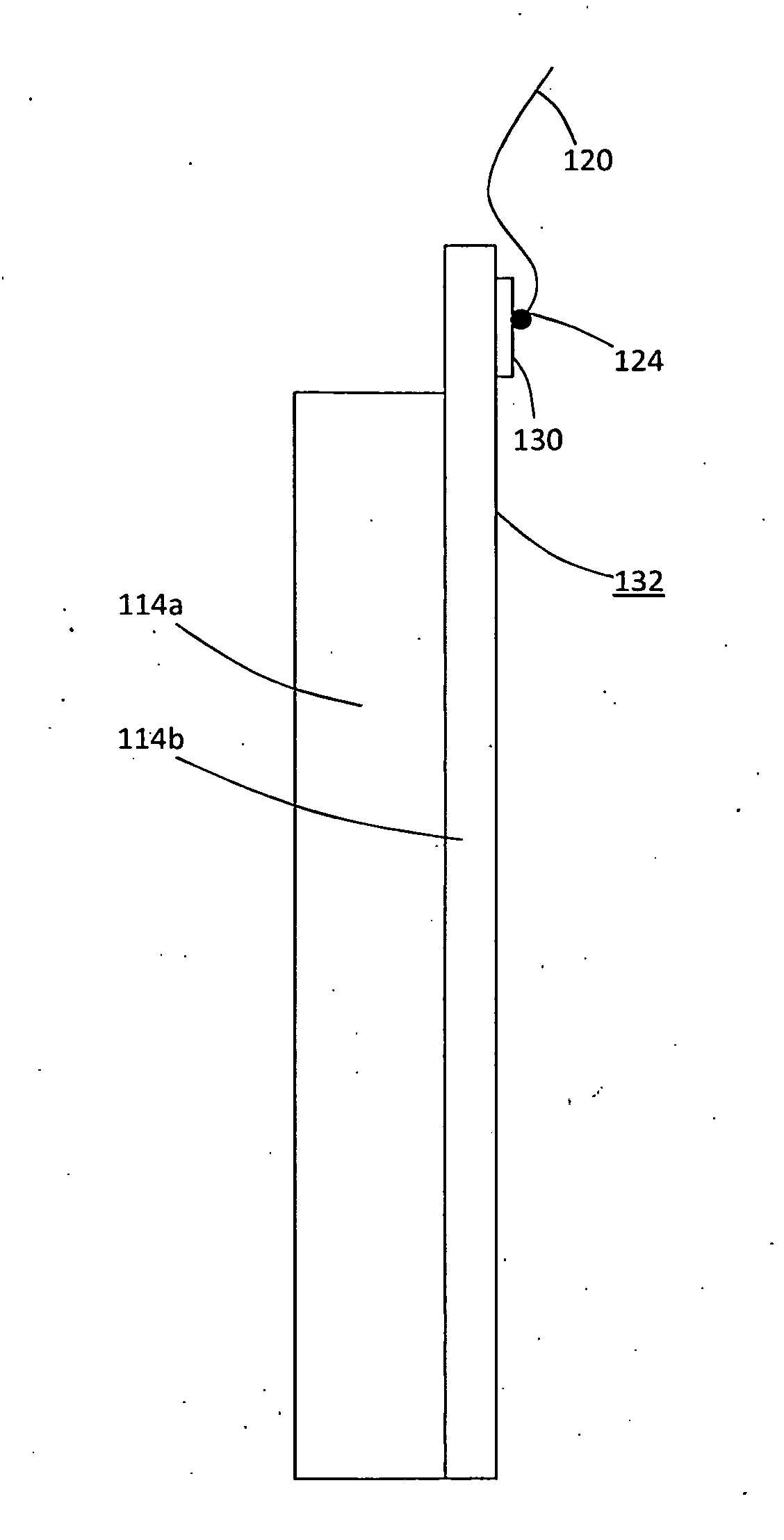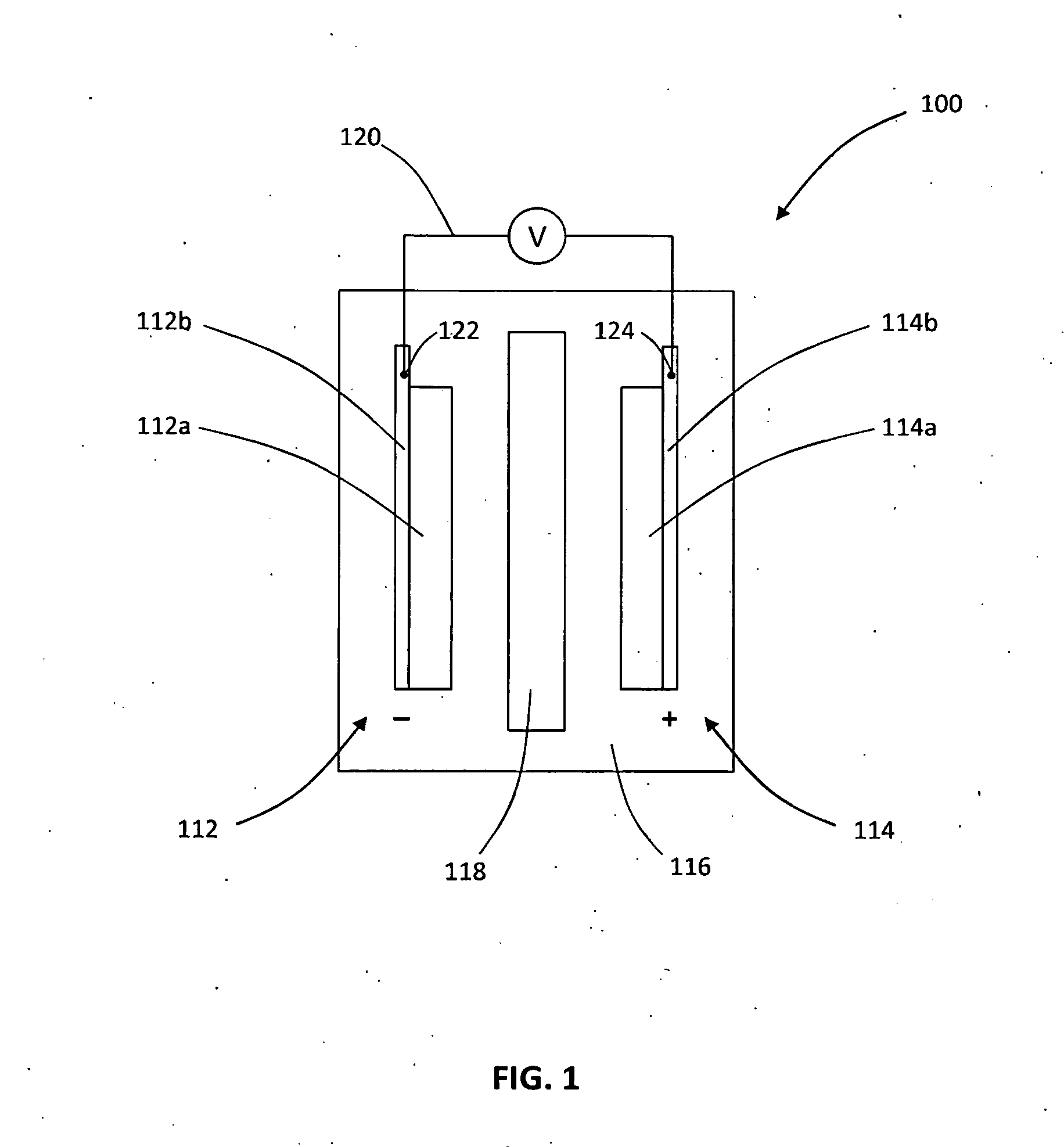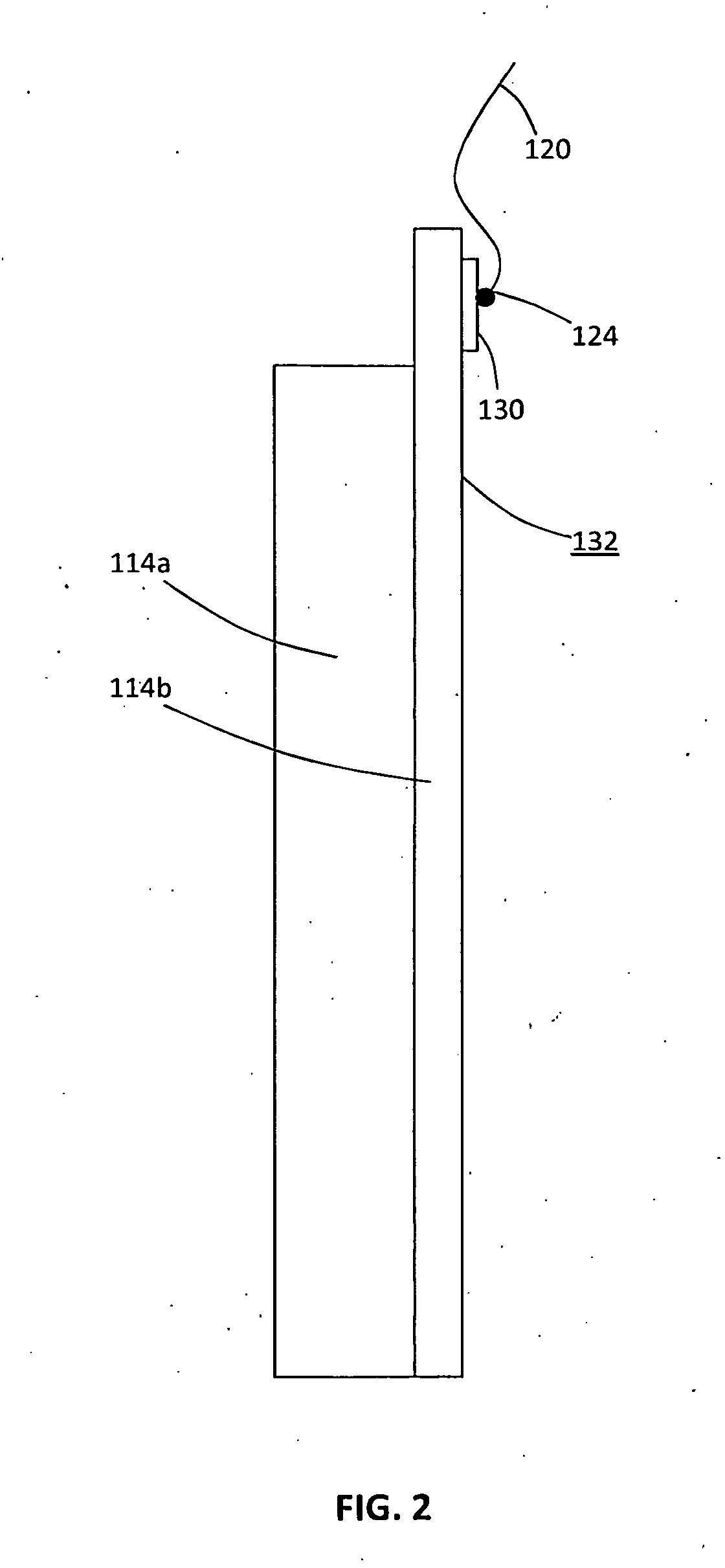Weldability of aluminum alloys
a technology of aluminum alloy and weldability, which is applied in the field of material joining technology, can solve the problems of significant decrease in tensile strength, defoliation of active masses inside batteries, and difficult weld of al and al alloys, so as to improve the weldability of electrical connectors, improve the weld conditions and strength in the weld zone, and improve the weldability of first metal substrates
- Summary
- Abstract
- Description
- Claims
- Application Information
AI Technical Summary
Benefits of technology
Problems solved by technology
Method used
Image
Examples
examples
[0042]Substrates of 100 μm thick Al foil were coated with thin layers of Cu (FIG. 4) and bronze, as discussed above. Electrical leads were then soldered to the Cu-coated samples (FIG. 5A) and the bronze-coated samples (FIG. 5B), respectively. The soldering process was easy to perform and produced good adhesion between the leads and the corresponding samples.
[0043]The samples were fractured and subjected to spectral analysis. FIG. 6 shows a Cu-coated sample, with a relatively thin layer of Cu being deposited atop the Al foil substrate. FIG. 7 shows a bronze-coated sample, the bronze layer being cold-deposited onto the Al substrate to form a surface layer on the Al substrate, and also embedding into the Al substrate.
PUM
| Property | Measurement | Unit |
|---|---|---|
| thickness | aaaaa | aaaaa |
| thickness | aaaaa | aaaaa |
| thickness | aaaaa | aaaaa |
Abstract
Description
Claims
Application Information
 Login to View More
Login to View More - R&D
- Intellectual Property
- Life Sciences
- Materials
- Tech Scout
- Unparalleled Data Quality
- Higher Quality Content
- 60% Fewer Hallucinations
Browse by: Latest US Patents, China's latest patents, Technical Efficacy Thesaurus, Application Domain, Technology Topic, Popular Technical Reports.
© 2025 PatSnap. All rights reserved.Legal|Privacy policy|Modern Slavery Act Transparency Statement|Sitemap|About US| Contact US: help@patsnap.com



